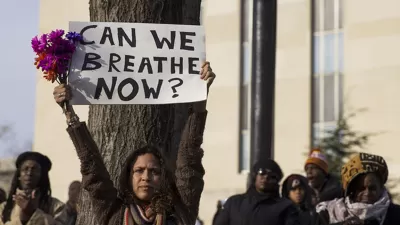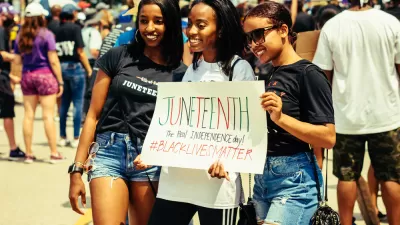Developing anti-racist approaches to urban planning requires looking elsewhere—to other geographies and histories—for alternative urban imaginaries and practices.

The systemic violence being committed against Black Americans in our cities has prompted much soul searching and table pounding about racial inequalities in urban planning education and practice. Many are the calls for radical change in how urban planners and architects do business. We've heard about the need to diversify student bodies and faculties, decolonize the curriculum, and deconstruct established practices and institutions. My favorite statement, because of its comprehensiveness, is "Un-making Architecture: An Anti-Racist Manifesto," by WAI Architecture Think Tank. Planetizen has also done great service to bring the issues and challenges into focus. This critical work has breathed new life into Audre Lorde's well-known declaration that "the master's tools will never dismantle the master's house."
A few of these passionate and compelling manifestoes argue that substantive, transformational change will require abandoning Eurocentric epistemologies, theories, and practices. There's a serious need to not only deconstruct our thinking but also dislocate it. We need to look elsewhere—to other geographies and histories—for alternative urban imaginaries and planning paradigms. One approach is to Look South and adopt what Jennifer Robinson famously promoted as a comparative, "Ordinary Cities" perspective on urban development. For my money one of the better entrees into this literature is Justin McGuirk's Radical Cities: Across Latin America in Search of a New Architecture. Much deeper dives are made in academic journals like City and the International Journal of Urban and Regional Research.
In a forthcoming book, I explore some of this conceptual terrain. I support the call for dislocating urban theory and practice by urging that we look around for new models. But I also urge that we look back: deep into the human past, to the full 6,000-year history of city-building. This long history is virtually untapped as a source of planning and land use knowledge. I've argued previously on this site about some of the contributions that deep historical analysis can make (e.g., see here and here). Many more examples and models await discovery and analysis.
My current favorite example, because of its relevance to the call for anti-racist planning, is from the Swahili Coast of East Africa. There's a robust body of published work in this area by scholars such as Jeffrey Fleisher, Adria LaViolette, Stephanie Wynne-Jones, William Bissell, and others. A Google Scholar search will turn up many books and papers. I weave observations and insights from this scholarly work into the discussion that follows.
 The Swahili Coast (Image by Runehelmet, Wikipedia)
The Swahili Coast (Image by Runehelmet, Wikipedia)
Urbanization along the Swahili Coast occurred between 500-1500 CE. This isn’t that long ago. However, it might as well be primeval given the powerful effects of the colonialist mindset that has kept Africa off the radar of comparative urban studies. In Swahili-land walled "stonetowns" were constructed out of rough coral and mortar (for an overview, see this article in Archaeology magazine). All evidence suggests that the stonetowns are an indigenous urban form and not, as previously thought, imposed from without, i.e., by contact with the Islamic world. But the stonetowns were also clearly embedded in global networks of exchange. They were outward looking, oriented to economic opportunities provided by international trade. Like the earliest cities of ancient Mesopotamia and the Indus Valley, and like cities today, Swahili stonetowns drew people from afar afield. Migrants came from the immediate hinterlands as well as from India and the Far East. This produced multi-ethnic, cosmopolitan settlements. Swahili cities have been described as "emporia": places where a mixed population came together. The stonetowns have also been described as "centers of extraversion, creative incorporation, and flexible adaptation." Relationships between town and country before 1500 in Swahili-land were inclusive and non-coercive. This would change after 1500 with the onset of the global slave trade.
The stonetown of Songo Mnara provides an especially good window into the social and material dynamics of Swahili urbanism. Songo Mnara is located in southern Tanzania and was occupied between 1355-1500 CE. It has UNESCO World Heritage Site status. The city features a couple dozen housing blocks loosely arranged around three large open spaces with an enclosing wall. There are six mosques, four cemeteries, and two elevated palace complexes in the southwest and northeast sections of the city. Economic production areas cross-cut social divisions. It appears that surrounding and subdividing stone walls were constructed less for protection than for symbolic purposes. Specifically, walls marked the city as "cultured space." They signaled, to foreign traders and investors, political and economic stability and credit worthiness. In other words, walls were part of the performance of cosmopolitanism. So too were the causeways that connected the city to the coast. Indeed, the entire material assemblage of Songo Mnara represents a monumental architecture of cosmopolitanism.

A main building at Songo Mnara. (Image by plouf 250, Wikimedia Commons)
Of particular interest at Songo Mnara are its open spaces. They defy classification according to the Western dichotomy of public vs. private space. Instead, they are versatile, multifunctional, and inclusive. I see them as excellent examples of the "synchronous" spaces that Richard Sennett describes in his wonderful book Building and Dwelling: Ethics for the City. These open areas hosted public ceremonies and performances. But they also allowed room for urban gardens, trade kiosks, and industrial activity; specifically, workshops for shell and stone bead making and ironworking. Perhaps most strikingly, they accommodated informal and temporary housing. Earthen houses existed alongside public amenities and performance spaces. In many cases houses were nestled up against city walls, indicating that these physical barriers were simultaneously resistant and permeable. Informal housing at Songo Mnara would have been in full view of political elites in their elevated palaces. The arrangement calls into question the ability of elites to fully control public space. The occupants of earthen houses appear to have had roughly proportionate access to the same kinds of goods as those in the elite houses, including coins and expensive imported pottery.
Thus, Songo Mnara seems a good example of how a city’s public spaces can, in Ash Amin’s wonderful phrasing, be dedicated to mixed use "without excessive surveillance, gating, privatization, or humiliation of minorities." In this combination of qualities Songo Mnara's civic space may have literally possessed what Sennett describes as the power of teatro mundi or "theatre of the world": the all-too-rare quality that separates diverse and vibrant urban public spaces from those that are mono-functional, well-ordered, and devoid of life.
So, as we debate the many issues and challenges associated with anti-racist planning we might look into the rich cultural history of Africa and its distinctive urban sociabilities and materialities. Many years ago, the historian Richard Hull (in African Cities and Towns Before the European Conquest) suggested that African cities "were at once utilitarian, ornamental, and humane." For Hull, urban living in Africa "radiated a spirit of mutual aid and cooperation, of civility and gentility." The Swahili stonetowns seem to exemplify this ethos. African cities in history display a wide variety of spatial logics and placemaking imaginaries. The stonetowns, and other urban locations on the continent, are potentially rich in insights about how to apply open and inclusive design forms and principles. They may not supply a ready-made set of tools for dismantling the master's house. However, at the very least they might provide some inspiration for imagining an anti-racist city whose citizenship culture is built on genuine commitments to cultural diversity, interdependency, and equity.
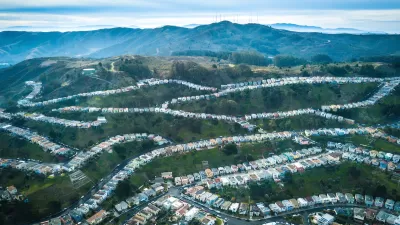
Depopulation Patterns Get Weird
A recent ranking of “declining” cities heavily features some of the most expensive cities in the country — including New York City and a half-dozen in the San Francisco Bay Area.
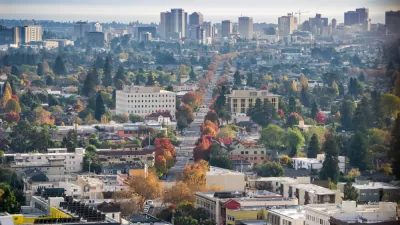
California Exodus: Population Drops Below 39 Million
Never mind the 40 million that demographers predicted the Golden State would reach by 2018. The state's population dipped below 39 million to 38.965 million last July, according to Census data released in March, the lowest since 2015.
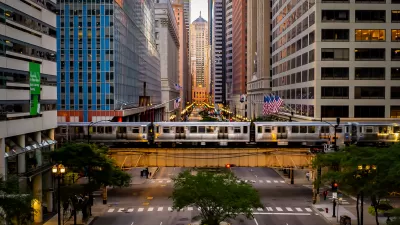
Chicago to Turn High-Rise Offices into Housing
Four commercial buildings in the Chicago Loop have been approved for redevelopment into housing in a bid to revitalize the city’s downtown post-pandemic.

Twin Cities Trains Move to Fewer Cars, Higher Frequency
Headways will drop from 15 minutes to 12 minutes.

DC Bikeshare System Breaks Ridership Record
Capital Bikeshare users took over 20,000 rides on one day in March.

EV Infrastructure Booming in Suburbs, Cities Lag Behind
A lack of access to charging infrastructure is holding back EV adoption in many US cities.
Barrett Planning Group LLC
City of Cleburne
KTUA Planning and Landscape Architecture
HUD's Office of Policy Development and Research
Mpact Transit + Community
HUD's Office of Policy Development and Research
City of Universal City TX
ULI Northwest Arkansas
City of Laramie, Wyoming
Write for Planetizen
Urban Design for Planners 1: Software Tools
This six-course series explores essential urban design concepts using open source software and equips planners with the tools they need to participate fully in the urban design process.
Planning for Universal Design
Learn the tools for implementing Universal Design in planning regulations.





















